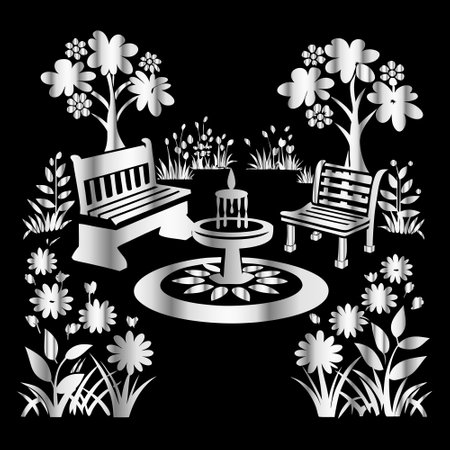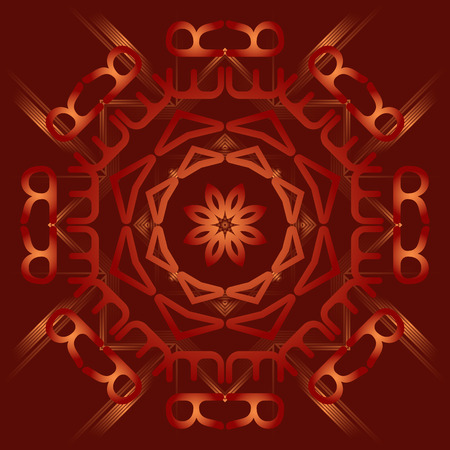Historical Roots of Wood Carving in South India
Wood carving in South India is not just an art, but a living tradition that gracefully weaves together history, spirituality, and local culture. Each region—be it Tamil Nadu, Kerala, Karnataka, or Andhra Pradesh—boasts its own rich narrative, shaped by centuries-old customs and the rhythms of everyday life. The genesis of this craft can be traced back to the ancient temple towns and royal courts where skilled artisans chiselled mythological tales and devotional motifs into temple doors, chariots, and household shrines. In the lush villages of Kerala, woodwork found its home in intricately carved ceiling panels and majestic temple architecture, echoing the region’s reverence for nature and divine energies. Meanwhile, in Karnataka and Andhra Pradesh, wood carving thrived under the patronage of dynasties like the Chalukyas and Vijayanagara rulers who commissioned elaborate wooden sculptures for palaces and public spaces. Over generations, these traditions have been lovingly passed down through family lineages, with master craftsmen innovating while honouring age-old techniques. Today, South Indian wood carving continues to embody a vibrant dialogue between heritage and contemporary expressions—celebrated in both sacred rituals and daily domestic life. Through every finely etched motif, one discovers not only the hand of the artisan but also the pulse of a community rooted deeply in its cultural soil.
Spirituality and Symbolism in Folk Wood Carving
South Indian folk wood carving is deeply intertwined with spirituality, manifesting as a living bridge between the material and divine. For generations, artisans have channelled their faith and devotion into chiselling intricate wooden motifs that reflect the region’s rich tapestry of religious beliefs. Temples across Tamil Nadu, Kerala, Andhra Pradesh, Telangana, and Karnataka become sanctuaries for these masterpieces—each beam, pillar, and door narrating stories of gods, goddesses, and legendary folklore. In village rituals, wood carvings serve not only as decorative elements but also as spiritual conduits, believed to invite auspiciousness and protection. The following table highlights the common motifs and their symbolic meanings found in South Indian folk wood carving:
Motif |
Symbolic Meaning |
Cultural Context |
|---|---|---|
| Lotus Flower | Purity, Spiritual Awakening | Temple ceilings, festival chariots |
| Peacock | Grace, Immortality | Pillars of village shrines, home entrances |
| Nandi (Sacred Bull) | Devotion, Strength | Temple gateways, rural festival floats |
| Kirtimukha (Face of Glory) | Protection from Evil | Main doors of temples and homes |
| Annapakshi (Mythical Bird) | Prosperity, Fertility | Bride’s palanquin, marriage mandaps |
| Dasavatara Panels (Ten Avatars of Vishnu) | Dharma, Cosmic Balance | Sacred temple corridors, storytelling platforms in villages |
The act of carving itself is often accompanied by prayers or mantras—transforming each wooden piece into a vessel brimming with energy and meaning. Artisans view their craft as a dharma (sacred duty), ensuring that every curve and contour invokes blessings upon those who dwell nearby. Through this harmonious interplay of design and devotion, South Indian folk wood carving continues to breathe life into age-old legends and everyday tales—making the spiritual tangible for communities across the region.

3. Techniques and Indigenous Materials Used by Artisans
In the vibrant realm of South Indian folk art, wood carving is revered not only as an aesthetic pursuit but also as a living tradition shaped by generations of skilled hands. The craftsmanship begins with the careful selection of native timbers, a process imbued with cultural wisdom and environmental consciousness. Teak, rosewood, and jackfruit are among the most treasured woods in this region—each chosen for its unique grain, strength, and workability. These indigenous materials have stood the test of time, reflecting both local ecology and the artisans’ respect for nature.
Selection of Native Timbers
The journey often starts in the dense forests or local timber markets, where artisans examine logs with an expert eye. Teak is favoured for temple doors and pillars due to its durability and rich hue; rosewood’s deep colour makes it perfect for intricate panels and decorative artefacts; while jackfruit wood, with its softer texture, is ideal for sculpting deities and ceremonial objects. The choice of wood is not merely technical—it is deeply rooted in regional beliefs about auspiciousness and symbolism.
Traditional Tools and Signature Chisel Work
Once the right timber is sourced, carvers employ traditional tools passed down through families: hand-forged chisels, mallets, rasps, and knives. Every tool has a specific role—from broad strokes that outline the form to fine-tipped chisels that coax out delicate motifs. The rhythmic tapping and gentle scraping are as much a part of the artwork as the finished piece itself—a symphony echoing through village workshops across Tamil Nadu, Kerala, Karnataka, and Andhra Pradesh.
Locally Passed-Down Methods
The techniques employed are steeped in local heritage. Patterns are often sketched freehand directly onto the wood before carving begins. Many artisans follow methods taught by elders—using natural oils to treat wood or sun-drying pieces to enhance their longevity. Regional styles emerge from these practices: Kerala’s ornate temple sculptures, Karnataka’s geometric latticework, Tamil Nadu’s mythological narratives—all bearing the imprint of ancestral knowledge interwoven with personal flair.
This harmonious interplay between material selection, tool mastery, and indigenous technique forms the soul of South Indian wood carving—a tradition where every carved line tells a story of place, people, and purpose.
4. Wood Carving in Traditional Handicrafts & Functional Art
In the vibrant heart of South India, wood carving transcends mere ornamentation, becoming a harmonious blend of function and beauty that infuses daily life with artistic grace. This tradition, steeped in centuries-old craftsmanship, finds its true expression in objects that are both utilitarian and symbolic—decorative doors, temple chariots (rathas), household idols, and ceremonial artefacts. Each piece is meticulously carved by hand, echoing stories and beliefs deeply embedded in local culture.
The Dual Essence: Utility Meets Aesthetics
South Indian artisans possess an innate ability to transform the most basic household objects into exquisite pieces of functional art. For example, intricately carved wooden doors not only serve as protective barriers but also stand as statements of familial pride and spiritual safeguarding. In many Tamil and Telugu homes, these doors are adorned with motifs like mango leaves (symbolising prosperity) and mythological figures—each detail chiselled with patience and devotion.
Everyday Objects Enhanced by Wood Carving
| Object | Purpose | Carved Elements | Cultural Significance |
|---|---|---|---|
| Temple Chariot (Ratha) | Used during religious processions | Deities, floral patterns, scenes from epics | Represents divine presence & community unity |
| Household Door | Main entrance to home | Mango leaves, peacocks, lotuses | Blessings, protection, auspiciousness |
| Puja Idols | Daily worship & rituals | Detailed features of gods/goddesses | Facilitates devotion & spiritual connection |
| Ceremonial Artefacts (e.g., lamp stands) | Festivals & special occasions | Pillars, mythological symbols | Cultural heritage & festivity enhancement |
A Living Dialogue Between Form and Function
This seamless integration of utility and artistry is what makes South Indian wood carving unique within Indias diverse handicraft landscape. The tactile feel of a carved door handle or the intricate base of a puja lamp is not just a touchpoint—it’s a daily reminder of heritage passed down through generations. These wooden creations become silent storytellers, weaving together everyday living with the grandeur of tradition and local mythology.
5. Folk Narratives & Storytelling Through Wood Carving
The Living Stories Carved in Timber
Epics and Mythology: A Tactile Expression
In the heart of South India, wood carving is more than an art—it’s a narrative device. Artisans skillfully breathe life into ancient epics like the Ramayana and Mahabharata, translating age-old legends onto temple doors, chariots, and household shrines. Each detail on the wood’s surface—be it Lord Krishna’s playful antics or the valor of local heroes—serves as a visual narration, making mythological tales accessible even to those who cannot read.
Community Histories: The Echoes of Identity
Beyond the grand epics, wood carvers encapsulate stories unique to their villages and communities. Scenes from agrarian life, local festivals, or moments of resilience during monsoons are etched with affection. These carvings are not merely decorative; they are living archives that document social customs and collective memories, handed down through families much like cherished recipes.
Passing Down Stories: From Master to Apprentice
This tradition thrives on oral storytelling combined with hands-on mentorship. Senior artisans—often addressed as “Anna” or “Chettan”—pass their knowledge to eager apprentices through both spoken word and demonstration. The stories embedded within each carved panel become part of a larger tapestry connecting generations.
Giving Voice to the Unheard
Wood carving thus serves as a powerful medium for voices that might otherwise remain unheard. By immortalising folk tales, unsung local legends, and community aspirations in wood, these artisans ensure that every groove and motif continues to resonate with meaning—a testament to South India’s vibrant cultural landscape.
6. Contemporary Challenges & Revival Efforts
Wood carving in South Indian folk art and handicrafts stands at a unique crossroads today, shaped by the relentless march of urbanisation and shifting cultural landscapes. The charm of intricate wooden toys from Kondapalli or the age-old temple panels of Tamil Nadu is in danger of fading, as younger generations migrate to cities, seeking modern livelihoods and leaving traditional crafts behind. This urban drift has led to the gradual erosion of artisanal communities and a disconnect from ancestral skills, pushing wood carving towards obscurity.
Another pressing challenge lies in market access. Many artisans, especially those in remote villages, struggle to connect with contemporary buyers who value both authenticity and innovation. The rise of mass-produced goods has flooded local markets, making it increasingly difficult for handcrafted woodwork to compete on price and visibility. As demand dwindles, so does the incentive for young people to learn these intricate skills, leading to a shrinking pool of master craftsmen across Karnataka, Andhra Pradesh, Kerala, and Tamil Nadu.
Yet, amid these challenges, there are heartening signs of revival driven by passionate individuals and organisations.
NGOs Empowering Artisans
Numerous NGOs have stepped in to bridge tradition with opportunity. They provide skill development workshops, facilitate access to fair-trade markets, and help artisans brand their work for a global audience. Initiatives like Dastkar or Crafts Council of India mentor wood carvers on design innovation while preserving classic motifs—ensuring that the craft remains both rooted and relevant.
Young Designers: Blending Heritage with Modern Aesthetics
A new generation of designers is also championing the cause of wood carving. These creative minds collaborate directly with rural artisans, infusing traditional techniques with contemporary sensibilities—think minimalist home décor inspired by Poompuhar carvings or sustainable fashion accessories crafted from reclaimed teakwood. Their efforts help tell the story of South Indian craftsmanship in ways that resonate with urban consumers in Bengaluru, Mumbai, and even overseas.
Community-Led Revivals & Digital Marketplaces
Community collectives are increasingly turning to digital platforms such as Etsy and Amazon Karigar to showcase their wares beyond local haats and melas (markets). Social media campaigns spotlight the faces behind each artefact, building emotional connections between buyers and makers—rekindling pride within artisan families while expanding their customer base.
The road ahead calls for a harmonious blend of innovation and tradition. By supporting these revival efforts—whether through conscious buying or encouraging local talent—South India’s legacy of wood carving can not only survive but also flourish anew in our evolving world.
7. The Role of Wood Carving in South Indian Identity Today
In contemporary South India, wood carving stands as a living bridge between centuries-old tradition and the vibrant pulse of modern life. The intricate chisels and motifs once reserved for temple facades or ancestral homes now find themselves woven into urban spaces, boutique hotels, and even global design forums. Yet, beyond its aesthetic charm, wood carving remains deeply intertwined with the region’s identity, acting as a cultural signpost that signals pride in local heritage.
Preserving Heritage Amidst Change
As India races forward with technology and rapid urbanisation, there is a renewed appreciation for artisanal skills that root communities to their past. In cities like Madurai and Mysuru, wood carvers are not just artisans—they are custodians of collective memory. Whether it’s the timeless Ganesha idols on festive occasions or carved panels narrating epic tales, these works evoke nostalgia and keep traditions alive within the fabric of everyday life.
Empowering Local Communities
The economic significance of wood carving cannot be understated. For many families in Kerala, Karnataka, Andhra Pradesh, and Tamil Nadu, this craft provides sustainable livelihoods. Artisans pass down secrets from one generation to another—often within tight-knit communities—ensuring that techniques remain authentic while adapting subtly to market tastes. Government initiatives and NGOs have stepped in with training programmes and digital platforms to help carvers reach wider audiences, both at home and internationally.
Tourism & Global Recognition
South Indian woodwork has become a magnet for both domestic travellers and international tourists seeking immersive experiences. Handicraft bazaars in places like Channapatna or Thiruvananthapuram bustle with visitors eager to witness live demonstrations or take home a piece of local artistry. This exchange not only brings economic benefits but also fosters cultural dialogue—sharing stories of craftsmanship far beyond Indian shores.
Ultimately, wood carving remains a dynamic thread in the tapestry of South Indian life—a testament to resilience, creativity, and enduring identity. As new generations reinterpret ancient designs or blend traditional forms with modern aesthetics, they ensure that the soul of this craft continues to flourish amidst an ever-evolving India.


